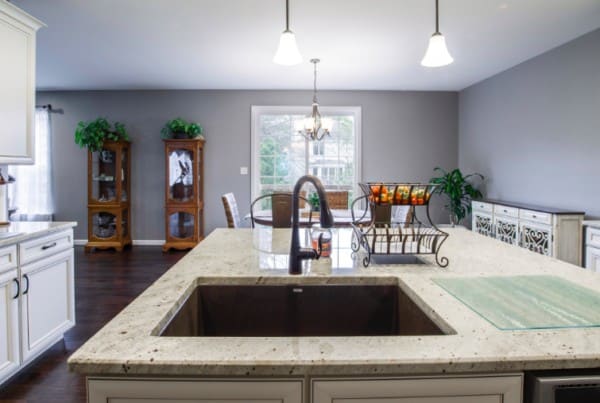Renovation is costly, but all of us would like to have the house of our dreams. Pinterest and YouTube give us so many ideas that look way out of our budget, but from the same sources, we also find so many cheap DIY options that look like they were done by professionals.
There’s no doubt that a fresh coat of paint can liven things up pretty quick. Sometimes changing up the color is all something needs to look like something entirely different. I have done many projects that involve painting furniture.

One of the common things people upgrade with paint is the kitchen cabinets. While it looks like a simple enough solution – all you have to do is paint, right? – it isn’t. It takes a little more than just slapping on a few fresh coats of paint to properly upgrade your kitchen cabinets. Here are some of the most common mistakes you need to avoid while painting your kitchen cabinets or any furniture really.
1. Not Allowing Yourself Enough Time
When people think of DIY, they think it is going to be easy and same goes for painting. But, when you are painting things that are usually professionally done, it isn’t a weekend project that you can do in a day or two.
It takes time to get a proper finish – to clean and prep the cabinets and get them ready for painting. You will need 5-7 days to get a good job done. Instead of taking it on as a weekend project, you can take it on as a summer project.
2. Not Removing the Doors and Drawers
While painting all the doors and drawers can be done while they are still attached – it is more trouble than getting them all off – you will not be able to cover the entire surface properly. The edges and folds will be missed. You will have difficulty painting. It will become more work than unscrewing them from their hinges before painting.
Many people try to save time by painting on everything while they paint the attached cabinet doors. When you paint the hardware together with the cabinet like the hinges and knobs, the paint applies as a single layer treating everything as one piece. So, when you start using the cabinets, the paint starts to chip near the hardware and your newly painted cabinets start showing wear and tear in not even a month.
To avoid this, remove all the doors and drawers, empty them, clean them, and prep them separately to get a great finish when you put everything together.
3. Not Cleaning the Wood and Hardware Before Painting
You might have cleaned your kitchen recently but you still need to do a deep clean before painting. The paint you are going to be using is most probably water-based and if your cabinets aren’t thoroughly cleaned then they are going to have a layer of grease coating or grease stains.
We all know that oil and water aren’t the best of friends, so your water-based paint isn’t going to stick to your oil-covered cabinets. You will have to use a grease remover or paint-prep degreaser to clean the cabinets. Also, use a non-scratch scrub sponge that is delicate for stuck-on spots so that you don’t scratch the surface, the scratches will only be enhanced with the paint.
If you have painted before or have paint on the hinges or metal knobs and the paint on the hinges has started to crack, then to prep them, all you have to do is sand everything down and soak the hardware to remove the paint.
4. Not Sanding the Cabinets
Even if your cabinets are in pristine condition, you will still have to sand them to make the paint stick better. When you sand down the wood, you create the surface rough enough for the paint to stick properly. The shiny finish that your cabinets have or the previous paint they have on will make it difficult for paint to stick and the new paint will also chip soon.
Use sandpaper to quickly buff up the surface you are painting to take the surface from glossy to matte. The matte surface of the wood adheres to paint better than the previous finish your cabinets are bound to have.
5. Not Dusting the Cabinets Before Painting
While it is important to clean the cabinets thoroughly, it is important to dust them just before you paint them. The deep cleaning you are going to do will need time for the cabinets to dry. Then you are going to be sanding it, which is going to throw up all sorts of wood dust.
You need to vacuum up any debris just before you paint so that you don’t paint over any dust particles that have settled over the cabinets. Even a single dust particle is going to give you a gritty finish and that one bulge is going to frustrate you. If you scrap it, it is going to take off the paint. You will then have to sand it again and repaint it. It is too much work for not dusting.
Takeaway
These mistakes are mostly made out of laziness and out of the need for saving time. While it can save you time at the moment, it is going to increase your efforts and will also create more work in the future. Whenever you take on a project, be sure to have enough time to do it properly so that you don’t have to re-do it.
 Gearfuse Technology, Science, Culture & More
Gearfuse Technology, Science, Culture & More


